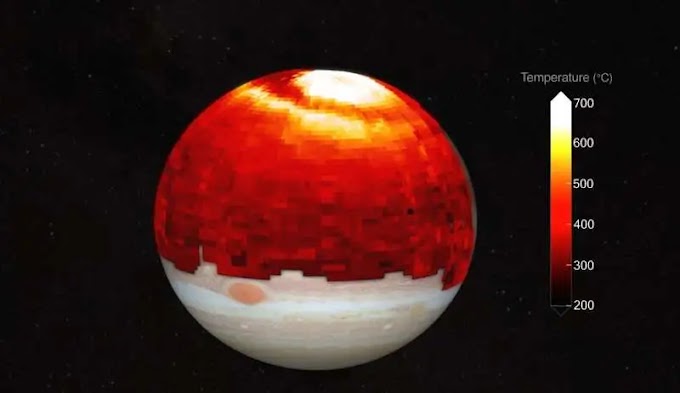NASA's Mars Rover captures incredible meteoroid impact and spotted ice
Mars is a rocky, dusty, and cold place. But it's also home to some amazing natural phenomena, like the stunning meteoroids that have been captured by NASA's Mars rover. The rover, which is equipped with a camera, has captured some incredible images of meteoroids slamming into the Martian surface. And while they may look small in the pictures, they're actually quite large; some of them are as big as cars. In addition to the meteoroids, the Mars rover has also spotted something else: ice. That's right, there is ice on Mars, and it's not just at the poles. The Mars rover has found evidence of ice near the equator, which could be a valuable resource for future missions.
NASA's InSight rover captures a meteoroid impact on Mars
On November 17, NASA's InSight rover captured a meteoroid impact on Mars. The event was caught by the rover's seismometer, which recorded the shock wave from the impact.
This is the first time that a meteoroid impact has been observed on Mars. The data collected by InSight will help scientists better understand how often these events occur on the red planet.
In addition to capturing the meteoroid impact, InSight also spotted more ice on Mars. The ice was found in a region called Terra Cimmeria, which is located in the southern hemisphere of Mars.
The observations made by InSight are helping scientists piece together a better picture of the Martian surface. With each new discovery, we are one step closer to understanding this fascinating planet.
The meteoroid is about the size of a pebble
When NASA's Mars rover InSight touched down on the Martian surface on November 26, it wasn't just making history as the first spacecraft to land on Mars in six years. The rover also captured a stunning meteoroid impact, providing scientists with their first look at an event that's common on the red planet but rarely seen from Earth.
The meteoroid is about the size of a pebble, and it hit InSight's solar panel at a speed of about 8 km/s (5 miles/s). The impact created a bright flash of light that was picked up by InSight's camera, and it also produced a small amount of debris that fell onto the Martian surface.
This is the first time that a meteoroid impact has been captured by a spacecraft on Mars, and it provides valuable data that will help scientists understand how these events occur on the red planet. The data will also be used to help design future spacecraft that are better equipped to withstand the rigors of space travel.
The impact created a small crater
A small, dark crater is visible in the centre of this image, which was taken by NASA's Mars Reconnaissance Orbiter (MRO) shortly after the agency's Mars Climate Sounder (MCS) observed a meteoroid impact on Mars. The MCS instrument aboard MCS observed the impact at 3:23 p.m. PST (23:23 UTC) on March 7, 2012.
The meteoroid hit Mars at an angle of about 25 degrees from vertical and created a small crater approximately 2 meters (6.5 feet) in diameter. The impact occurred near the Martian north pole, in an area where many small craters have been found before. Scientists believe that these craters were created by meteoroids striking Mars at high velocity.
The March 7 impact is one of only a handful of confirmed meteoroid impacts that have been observed on Mars. In November 2013, the MRO orbiter captured images of another impact site, this one located in Gale Crater. That event was also detected by MCS, and scientists believe it was caused by a much smaller meteoroid than the one that struck in 2012.
InSight also spotted more evidence of ice on Mars
InSight also spotted more evidence of ice on Mars. The rover's instruments detected a meteoroid impact while the spacecraft was on the Martian surface. The data from the event will help scientists understand how often impacts like this occur on Mars and what the consequences could be for any future missions to the planet.
In addition, InSight's cameras captured images of what appears to be ice on Mars. This is the first time ice has been observed on the planet's surface. The images show a bright, reflective material that may be water ice.
The data will help scientists better understand the Martian surface
The data captured by NASA's Mars rover will help scientists better understand the Martian surface. The data shows a stunning meteoroid impact and more ice on the surface of Mars. This will help scientists better understand the Martian environment and how it interacts with its atmosphere.






0 Comments
I love to read your comments. Please comments